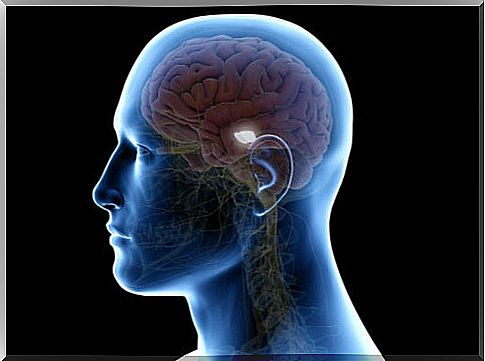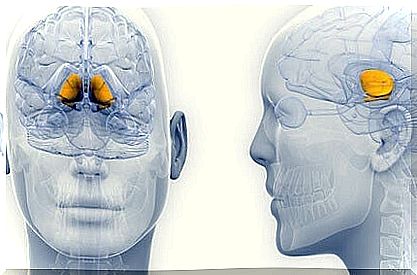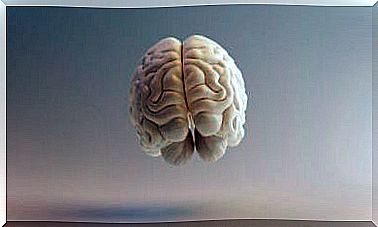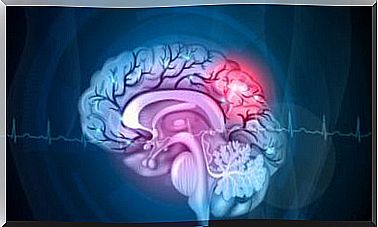Black Substance, The Artisan Of Movements And Learning

One of our most amazing brain structures is the substantia nigra. If we judge it by its size, we might think that it does not play an important role, when in fact it is vital for our body.
This article will be dedicated to her. We will define it and talk about its parts and its functions. In addition, we will show you which diseases can be associated with alterations in the substantia nigra. Let’s start exploring!
Black substance, what is it?
It is a structure that is part of the basal ganglia, a circuit of interconnected nuclei. It is located in the midbrain of our brain. In addition, we have it on both sides of our brain, that is, in each of our cerebral hemispheres.
You ask, what is its name? It turns out that the neurons of this structure have a pigment that makes them appear dark. This pigment is called neuromelanin, and it is present in dopaminergic neurons, which are abundant in this area.

Functions of the substantia nigra
The black substance has two parts, each with its own functions, let’s see:
- Compact: it is responsible for the transmission of signals to the rest of the basal ganglia, in addition, it initiates and regulates fine motor skills, through projections of dopaminergic neurons. This area is characterized by being darker, therefore, it contains a greater number of dopaminergic neurons.
- Reticulated: its function is to send signals from the basal ganglia to different areas of the brain, especially the thalamus, an information control center. It contains less number of dopamine neurons.
Let’s qualify. Do not think that because in its compact part there are more dopaminergic neurons, the reticulated section does not play an essential role; Above all, it helps neuronal inhibition through the neurotransmitter GABA.
Learning
The substantia nigra is associated with learning processes, as it mediates the brain’s response to stimuli. Its function is to facilitate learning, thanks to the reinforcing effects of dopamine. In addition, he is involved, above all, in spatial learning.
Why this feature? A large number of dopaminergic neurons are activated when stimuli appear that surprise us. This would support the implication of this structure, since it contains neurons of this type. However, it does not do it in isolation, it acts in connection with other brain structures.
Motor skills
As we mentioned at the beginning, the substantia nigra is part of the basal ganglia, a set of nuclei that influence movement. So what is the specific action of the black substance? Initiate and direct movements in which fine motor skills are necessary.
Eye movements influence the activation of the reticulated part in association with the thalamus and other structures of our nervous system. They work above all so that our gaze stabilizes, in the movements of our face and our head. In addition, they intervene in visual processing.
Reinforcements and rewards
When we have pleasant sensations, the neurons of the substantia nigra are also activated. In this way, they participate in the reward circuits. In fact according to Bear, Connors and Paradiso, authors of the book Neuroscience. The exploration of the brain makes it easier for us to predict behaviors that involve reinforcement.
Then, when behavior patterns are repeated, the black substance would also be acting. This is because there are associations between stimuli and reactions. Therefore, this substance is linked to: motivation, reinforcement, and addictions; since it can be activated before the adaptive use of learning.
Sleep regulation
Again we emphasize the dopaminergic neurons that are among other places, in this structure. Thanks to them, our biological sleep rhythm is regulated, that is, it has to do with waking sleep patterns. In the type of sleep that is most activated is that of rapid eye movements. Incredible true?
In addition to these functions. the substantia nigra has to do with temporal processing. That is, with the perception of time, in terms of the detection of stimulus intervals.

Diseases associated with the substantia nigra
As we have seen, the black substance acts in various potential functions for our body. Therefore, its failure can cause various diseases. We will focus on two of the most prominent:
- Schizophrenia. It is a mental disorder in which the substantia nigra appears to be involved. What happens is that the dopaminergic pathways are altered in this disorder, even the levels of this neurotransmitter can become very high in this disease. For this reason, it is not uncommon for the disease to have symptoms associated with motivation and mood.
- Parkinson’s disease. Dopaminergic neurons degenerate, especially in the compact part of the substantia nigra. In addition, if we reflect a little on the functions of this substance, we will be able to notice how they are closely related to some symptoms of the disease. For example, motor, mood and sleep disturbances.
In short, the black substance is what helps us in movement, motivation, sleep, detection of stimulus intervals, mood, learning and the connection of nerve signals. Therefore, its absence or alteration causes significant problems in the processes in which it participates.









